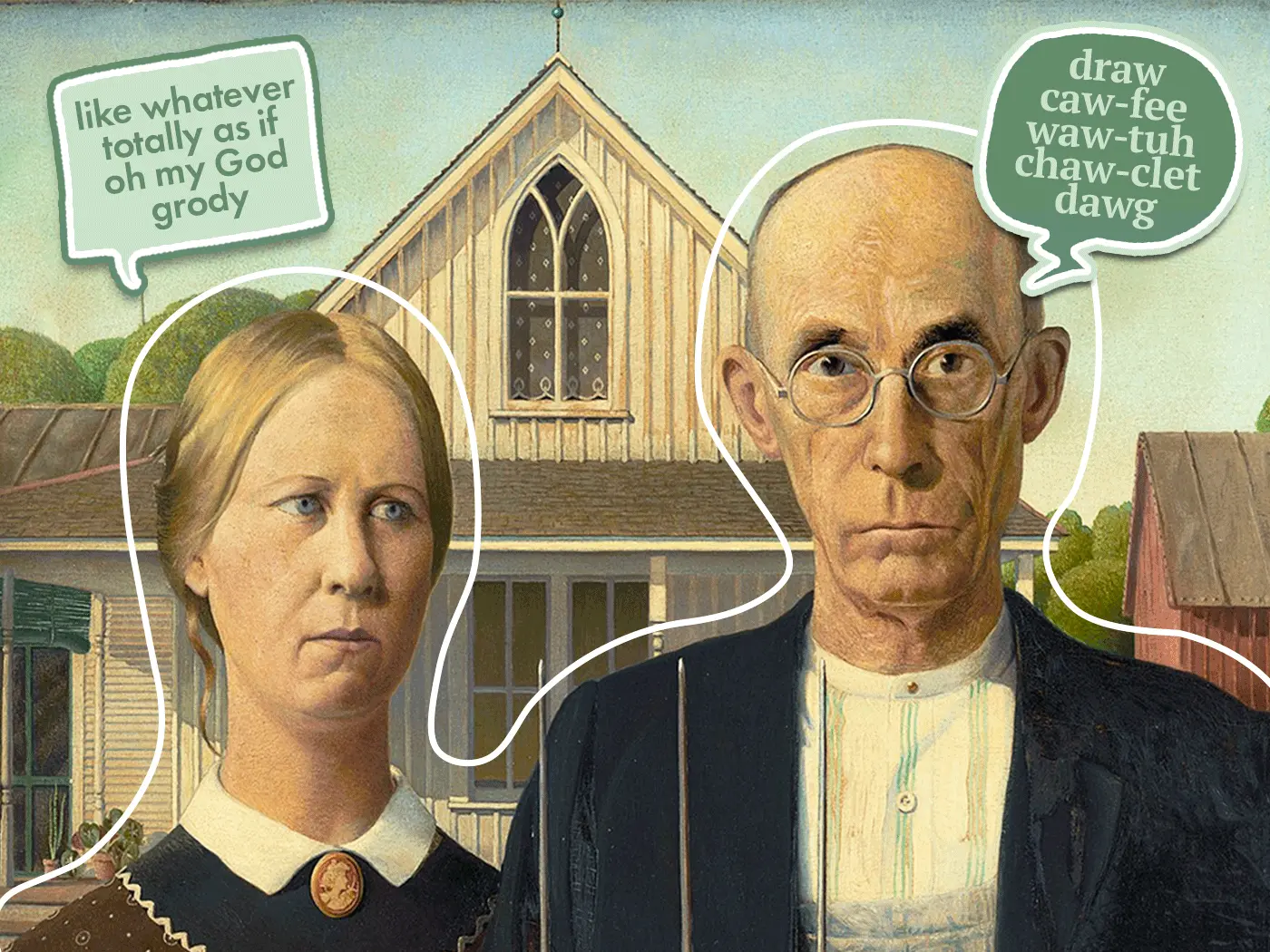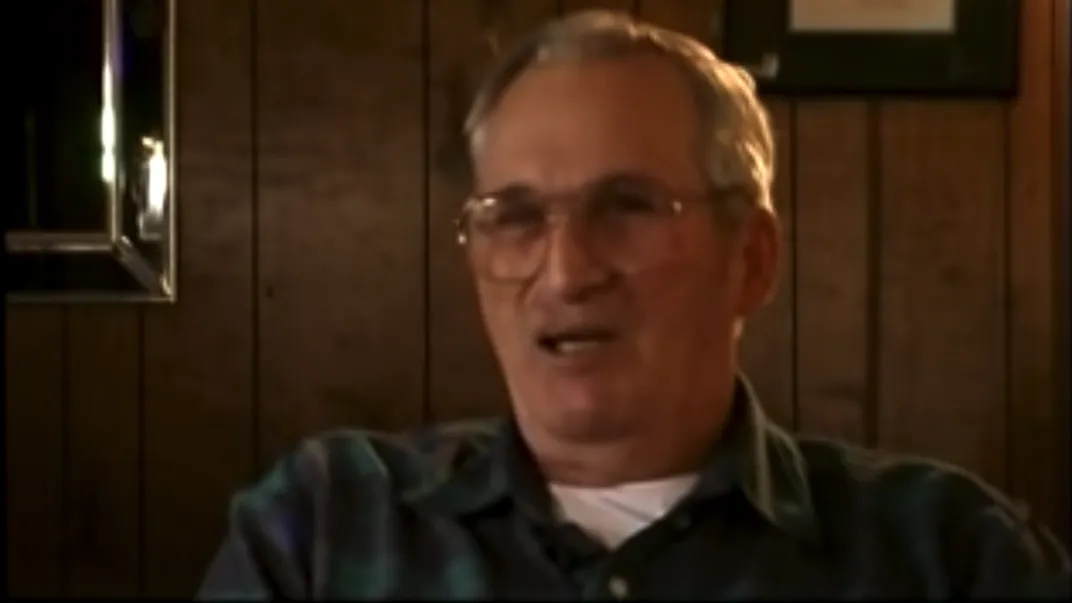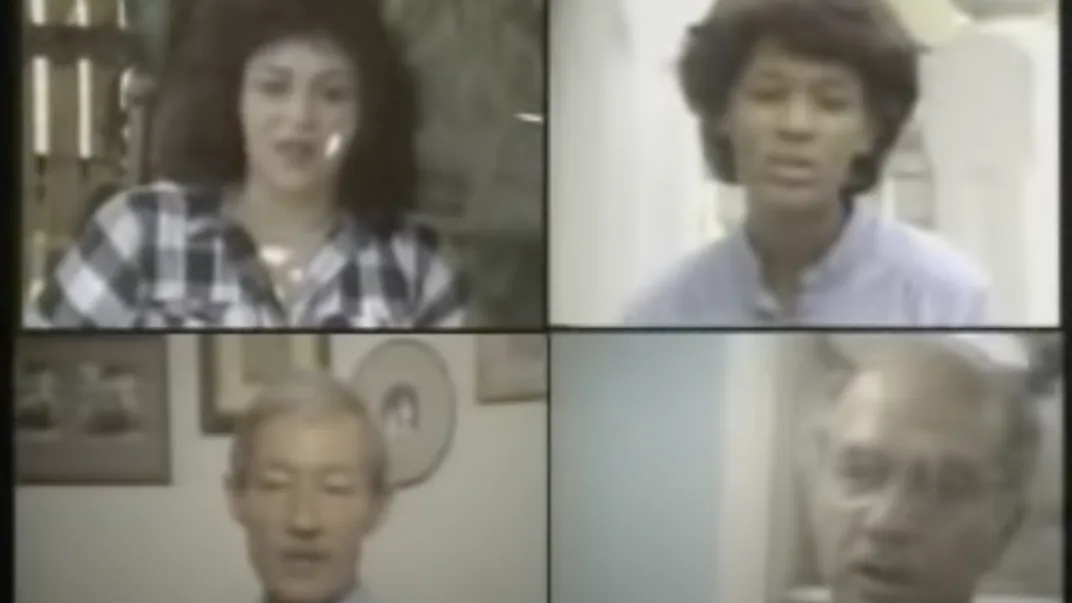A Brief History of the United States’ Accents and Dialects
Migration patterns, cultural ties, geographic regions and class differences all shape speaking patterns

The United States may lack an official language, but a road trip across the country reveals dozens of different accents and dialects of English that serve as living links to Americans’ ancestors.
What’s the difference between these two linguistic terms? Accents center on the pronunciation of words, while dialects encompass pronunciation, vocabulary and grammar. They both often vary by region.
“Even Americans, most of whom speak only English, usually know more than one dialect,” notes the Linguistic Society of America. Consider, for instance, how an individual might speak to their boss versus a stranger who just rear-ended their car.
Dialects are rooted in the same system, but “their partly independent histories leave different parts of the parent system intact,” according to the society.
Myriad factors influence variations among American accents and dialects, including waves of settlement in a region, geographic location and class differences.
“There’s never [just] one accent in a given place,” says Teresa Pratt, a sociolinguist at San Francisco State University. “There’s so much variation, even in one particular region.”
Learn more about the accents and dialects featured in this article by exploring this interactive map.
Regional differences
The U.S. is commonly divided into distinct regions: the West, the Midwest, the Southwest, the Southeast and the Northeast. But broad accent categories based on these regions are more accurately broken down into diverse dialects across different localities.
Dialects in the Deep South—encompassing Alabama, Mississippi, Louisiana, Georgia and South Carolina—are distinct from those in Texas, a large state that’s home to several linguistic varieties, as well as a mix of Spanish and English (nicknamed Spanglish) closer to the U.S.-Mexico border.
“The South gets stereotyped as a monolith, which is really unfair,” says Nicole Holliday, a linguist at Pomona College.
/https://tf-cmsv2-smithsonianmag-media.s3.amazonaws.com/filer_public/99/cd/99cd9182-b233-4e35-82f8-94389ee0d7e9/george-henry-boughton-pilgrims-going-to-church.jpeg)
The many variations in the American South include South Midland, Ozark, Coastal Southern, Virginia Piedmont, Gullah, Cajun English and Gulf Southern.
The popularity of specific dialects is often tied to regional history. When English colonists first arrived in North America in the early 17th century, they landed on the East Coast, establishing English-speaking communities in the North and the South. The French, the Dutch, the Spanish and other European powers also introduced their own languages as they colonized different parts of the continent. Speaking styles in different colonies remained distinct because travel opportunities were limited at the time, says Jessi Grieser, a linguist at the University of Michigan. “Historically, it’s about migration and who went where,” she adds.
English settlers succumbed to competing influences when they came into contact with Native Americans and colonists from other countries, all while isolating themselves from England. Centuries of settlement on the East Coast resulted in more linguistic variation among the region’s cities because English was spoken there longer, Holliday says.
Colonists’ ways of speaking were also influenced by the trans-Atlantic slave trade, which brought individuals kidnapped from Africa to North America.
Within the Black community, the mixing of West African languages and English resulted in different linguistic quirks, too. Some academics argue that this coupling created African American Vernacular English (AAVE), a speaking style alternatively defined as a dialect or language. Common English words potentially rooted in AAVE include banana, yam, okra and gumbo; distinct features of the linguistic variety include using “ain’t” instead of “haven’t” as a negative and stressing the first syllable in words like “hotel” and “July.” Today, AAVE is spoken throughout the U.S., particularly in cities. When the formerly enslaved and their descendants migrated to the North during both Reconstruction and the civil rights era, they brought their regional vernacular with them.
Westward expansion also influenced the development of the U.S.’s accents and dialects. In the 19th century, white settlers migrated inland from the East Coast by the millions, spreading their regional dialects. Because travel was easier in the American West, dialects mixed more freely there, producing “something slightly more homogenized,” says Grieser. As such, she calls the differences in Western varieties of English “a little bit more subtle” than in the North and the South.
Language ideologies
Today, dialects affect Americans on a largely subconscious level, through a phenomenon known as language ideology. The term refers to “the connections we make in our heads between the language features a speaker uses and our social perceptions of what that speaker’s like,” Grieser explains.
American dialects map according to linguist Robert Delaney: http://t.co/TrsJOw6PB0 pic.twitter.com/0rBw7QPYLp
— Michigan Language Assessment (@MichiganTests) September 12, 2015
These perceptions can result in positive stereotypes, like the American perception of British accents as “posh.” But language ideologies can also perpetuate social stigmas. Individuals criticized based on the way they speak are “usually speakers who have less power,” such as African Americans, Latinos and women, Grieser says.
Southerners, too, can fall victim to negative stereotypes that unfairly paint them as “backward and uneducated and poor,” Holliday says. Some of these judgments are linked to the region’s loss in the Civil War.
Below, learn about three areas in the U.S. that offer helpful context for understanding the complex tapestry of American accents and dialects.
California
The untrained ear may not detect a discernible accent used by Golden State natives, but California’s dialects are thoroughly studied by linguists as byproducts of history.
California was first settled by Native Americans, then colonized by the Spanish in the 18th century. Spanish missionaries operated throughout the region, with the goal of converting hundreds of Native American tribes to Christianity. Spanish became the region’s lingua franca, with English only gaining popularity in the mid-19th century, when the California Gold Rush brought English-speaking miners and prospectors to the area.
“Even the mainstream, white English that’s spoken here sounds a little bit like Spanish,” Holliday says. She credits this trend to both regional history and the modern coexistence of English and Spanish in the state.
/https://tf-cmsv2-smithsonianmag-media.s3.amazonaws.com/filer_public/56/90/5690bef9-358b-484a-99ca-667ba0ee9925/mining_on_the_american_river_near_sacramento_circa_1852.jpeg)
California became a state in 1850, shortly after the discovery of gold at Sutter’s Mill. Many 49ers, as the fortune seekers who flocked to the region were nicknamed, initially hailed from Mexico, Chile and China. The U.S.’s first Chinatown was established in San Francisco, and in 1852 alone, 20,000 Chinese immigrants settled in the state.
The Gold Rush eventually attracted prospectors from all corners of the globe, including Europe, Australia and New Zealand. This international influence is evident in San Francisco, where Irish settlers shaped the “Mission Brogue,” a vocal pattern in which “coffee” is enunciated as “CAWfee.”
In the 1930s, California’s Central Valley, a swath of land spanning Redding to Sacramento to Bakersfield, welcomed an influx of migrants from Oklahoma, Arkansas and other Southern states devastated by the Dust Bowl. These settlers brought their regional dialects with them. Today, the speaking styles of the valley’s residents reflect Southern dialects, even if an individual’s ancestors weren’t part of the Dust Bowl diaspora, Pratt says.
/https://tf-cmsv2-smithsonianmag-media.s3.amazonaws.com/filer_public/47/49/474977f8-4892-4fe8-ad2b-8d1aec7c5f54/california_vowel_shift.png)
Today, one linguistic trend that’s synonymous with the state is the California vowel shift, which occurs when a person pronounces words differently by moving their vowels forward in their mouths. (“As with strangers in an elevator, one vowel shifts to keep its distance when another enters the space,” PBS explains.) “At its most extreme,” says Grieser, “that’s the thing we think of as that ‘Valley girl’ accent.”
According to Atlas Obscura, in the California vowel shift, “‘kit’ becomes ‘ket,’ ‘dress’ becomes ‘drass,’ and ‘trap’ becomes ‘trop.’”
From Kansas to Michigan, more Americans are picking up the California vowel shift, because it connotes a cool, urban variety of English, Grieser adds.
Appalachia
In the eastern U.S., the Appalachian Mountains run from as far north as Canada to as far south as Alabama. But Appalachia itself is a cultural region encompassing all of West Virginia and parts of a dozen other states, including Kentucky, Virginia and North Carolina.
First populated by the Cherokee Nation, Appalachia welcomed its first European visitors in 1540. Waves of white immigrants—among them English, Scottish, Irish, Welsh, Dutch, German and French settlers—followed over the next three centuries.
Prior to the Civil War, which started in 1861, many immigrants came to Appalachia to escape political revolts and crop failures in their homelands—chiefly China, Germany and Ireland.
The region’s geographic isolation influenced the development of its language dialects, including the predominant Appalachian English. “In Appalachia, people were isolated, because there were riverbeds and mountain ranges,” says Karen Adams, a linguist at Arizona State University. Many subvarieties exist within this dialect, but its chief features include using extra prepositions (“on up around on” instead of “on”); adding the “-iz” sound to the end of plural words, like “deskes” and “ghostes”; and pronouncing “-ow” as “-er” at the end of words like “hollow,” “potato” and “window.”
The Scots-Irish, a group of lowland Scots who relocated to Northern Ireland in the 17th century and to Appalachia in the 19th and 20th centuries, had a long-lasting influence on their new home region. Modern remnants of the Scots-Irish dialect include “pronouncing ‘pen’ and ‘pin’ the same way and referring to valleys as ‘bottoms,’” according to Lees-McRae College.
/https://tf-cmsv2-smithsonianmag-media.s3.amazonaws.com/filer_public/3f/4a/3f4a94c5-7149-4a98-853f-7856f28be45f/50207975022_358e64073c_k.jpg)
JSTOR Daily describes Appalachian speech as “quite different from standard American English,” in part because of the historic vocabulary still in circulation. For instance, “britches” refers to “pants,” while “poke” is used for “bag.” Present-day Appalachian grammar is also reflective of Scots-Irish heritage.
New Orleans
Founded more than 300 years ago by the French, the city now known as New Orleans was originally inhabited by the Chitimacha Tribe. As early as 1719, slave traders in the port city sold Africans kidnapped from their homes as enslaved laborers.
New Orleans changed hands in 1762, when the Spanish took control of Louisiana, bringing enslaved people from the Benin and Congo regions with them. The U.S. subsequently purchased the territory in 1803.
Other immigrant populations soon began to call New Orleans home, including Haitian refugees at the turn of the 19th century and German and Irish settlers in the middle of the century. The Irish served as a source of cheap labor following the U.S.’s 1808 ban on the importation of enslaved people. In the aftermath of the Civil War, the Crescent City saw an uptick in Jewish, Croatian and Chinese immigrants.
Another major immigrant group, the Italians (mostly hailing from Sicily), settled in the city’s French Quarter in droves after fleeing corruption in their native country in the 1880s. They expanded the pre-existing Italian enclave established under the French.
This medley of distinct cultural influences created about seven different dialects tied to different neighborhoods throughout New Orleans, including the Cajun and Yat varieties. Commonly spoken in the city’s Ninth Ward, Yat is originally tied to French settlers and other immigrants from Europe. Its name is derived from the expression “Whe y’at?,” replacing the phrase “Where are you?”
Rhoticity—“the linguistic term for whether or not you pronounce ‘r’ sounds after vowel sounds,” according to dialect coach Erik Singer—serves as a differentiator among accents. The working-class accents of New York City and Boston are non-rhotic, meaning speakers drop the “r,” as are some of the old-fashioned Southern accents, including Yat. In these variations, “water” is pronounced as “watah,” “quarter” as “quatah” and “where” as “whe”—the latter dropping the last consonant.
/https://tf-cmsv2-smithsonianmag-media.s3.amazonaws.com/filer_public/75/11/751146c7-725a-4791-bdcf-a5bde56fad14/40219793492_6bd2b2470d_k.jpg)
“Broadly speaking, coastal Southern accents were non-rhotic, and inland—especially mountain—Southern accents were rhotic,” Singer says. “You can trace those back to the original settlers and where they came from.”
Similarities still exist between New Orleans’ Yat variation and Brooklynese, a dialect popular in New York City, because of the urban centers’ shared Irish and Italian heritage. “There was a dialect in New Orleans that actually sounded very much like Brooklynese, because they had the same kinds of speakers move into those areas, and they developed varieties that actually sound alike,” says Adams.
Ultimately, Adams points out that pronunciation shifts constantly throughout the U.S., and “changes are continuing to happen all the time.” But one fact remains the same, she says: “Everyone speaks a dialect, and everyone has an accent.”
/https://tf-cmsv2-smithsonianmag-media.s3.amazonaws.com/accounts/headshot/megan2.png)





/https://tf-cmsv2-smithsonianmag-media.s3.amazonaws.com/accounts/headshot/megan2.png)